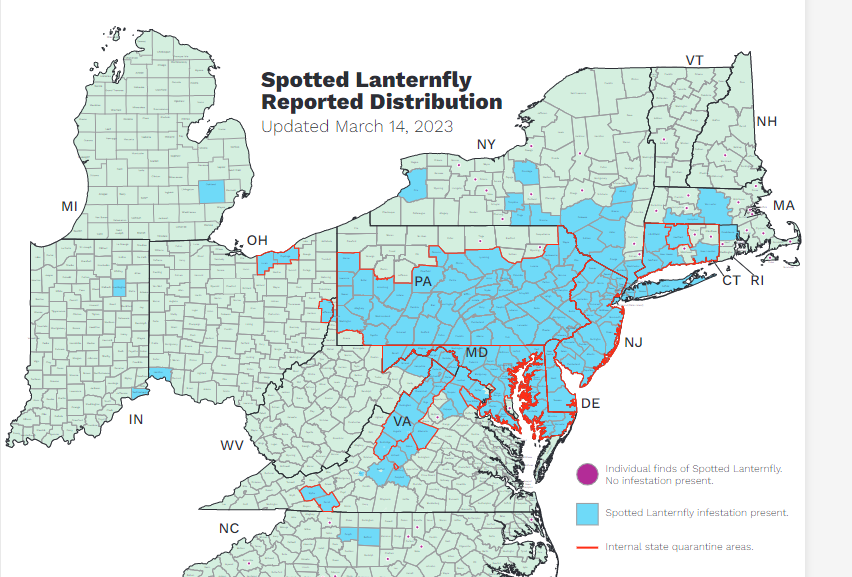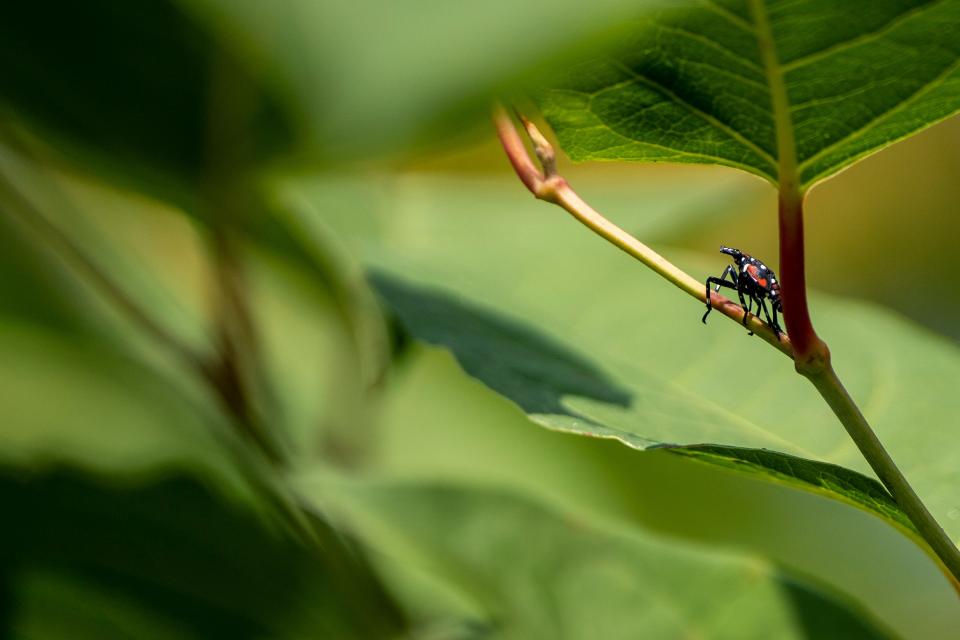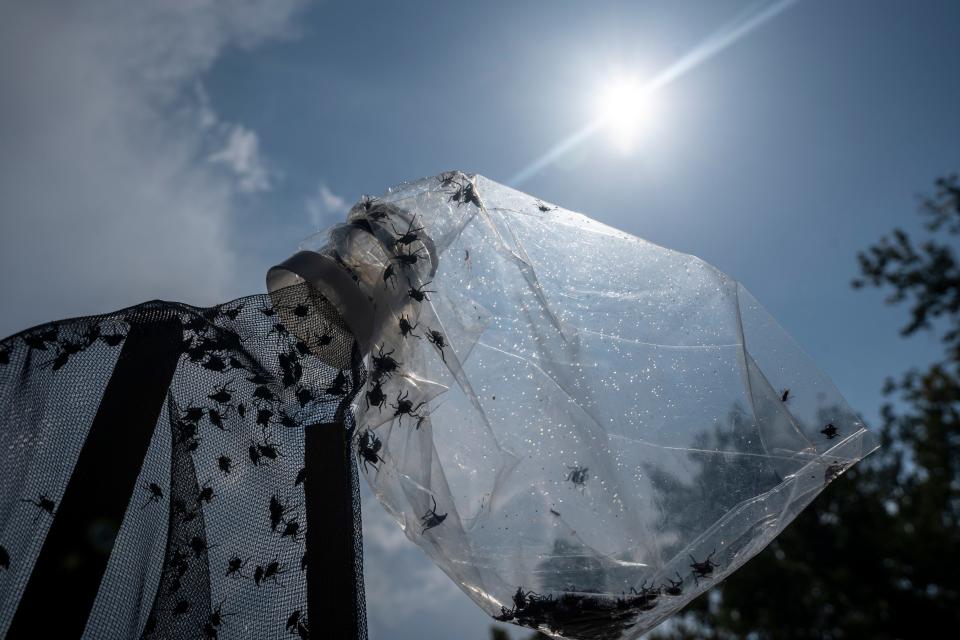Spotted lanternfly population down in NJ, but insect likely to be a long-term resident
A bold invader, the invasive spotted lanternfly has proven to be a colorful planthopper, an unpopular pest and an enduring part of New Jersey summers.
Though well established after five years in the Garden State, the insect has been less conspicuous in 2023, said George Hamilton, a professor and entomologist at Rutgers University–New Brunswick. The spotted lanternfly may be running out of steam or simply experiencing an off year. Populations in 2023 have been lower than in each of the last two years, Hamilton said.
"Possible reasons could be the hot dry weather we had last summer, the severe cold we had in January or the relatively warm weather we had during most of the winter," he said. "It could also be that the high populations have severely damaged or killed their host plants, causing them to move on."
Where did the spotted lanternfly come from?

Harmless to people and pets, yet destructive to plants, the spotted lanternfly made its way into the United States from Asia via Pennsylvania, where established colonies were first reported in 2014. In 2018, the species made a home in New Jersey. Since, it has since spread statewide.
This past winter, New Jersey Department of Agriculture officials added the last eight of the state's 21 counties into their spotted lantern quarantine zone. Accompanying regulations require residents to check outdoor items, such as building materials, firewood and camping gear, for live insects or egg masses prior to moving them outside the quarantine area.
How expensive is it to live in New Jersey? We break it down, state-by-state
The quarantine coupled with its educational campaign and herbicide treatments on the tree of heaven have shown promise in combating the spotted lanternfly, said Anne Nielsen, also an entomologist at Rutgers. Still, to manage the species over the long term, Nielsen said a multi-stage approach is required. That could mean future biological control with species that target lanternflies, she said. Natural predators, such as spiders, birds and the praying mantis, have proven formidable.
Though poor-flying, the spotted lanternfly has already spread to much of the Northeast and established colonies as far west as Indiana, according to U.S. Department of Agriculture records. To help reduce the spread, officials at the department's spotted lanternfly unit this June released a five-year plan that prioritizes strategies to limit the insect's advancement, develop a unified educational campaign and support scientific research to manage the species and its impacts.
Why is the spotted lanternfly bad?

Outside of being a widespread annoyance, the spotted lanternfly's ability to devastate the agricultural industry has been a major concern in New Jersey. The insect feeds on plants and leaves covered in sugary waste that attracts other insects and molds. Thus far, it has found hosts in key cash crops, including grapes, apples, hops and walnuts. Its preferred food, however, is sap from another invasive and locally prevalent species from Asia, the tree of heaven, according to USDA records.
This new Jersey City restaurant has stunning views and 'coastal' menu from celeb chef
Nielsen said the insect has a wider range of domestic host species than experts first expected. Most of the more than 70 species are hardwood trees. As a result, Nielsen said the spotted lanternfly’s impact on agriculture has not been as widespread as initially predicted.
"We are seeing impacts to grape production and some nursery crops, but agricultural impacts are mostly limited to these commodities," she said.
In the more immediate future, control efforts will likely involve trapping for spotted lanternflies in their nymphal stage on preferred host trees: the red maple, black walnut and tree of heaven, Nielsen said.
"The United States Department of Agriculture-developed circle trap is easy to make and can remove thousands of young nymphs," she said. "Adult management likely requires insecticide treatment by trained professionals on hardwood trees and by commercial grape growers. Scraping of egg masses may help but will only remove about 10% to 20% of eggs on a tree."

Egg masses typically begin to appear in September and, unlike the adults, survive the winter. The egg masses can produce about 30 to 50 nymphs that hatch in late April or early May and grow to adulthood by late July or early August. Most of New Jersey's spotted lanternfly are now in the adult stage, Hamilton said.
What kills spotted lanternfly?
To remove the insects, a variety of tactics have been employed throughout the region this year. They include removing the insects with vacuums and blasting egg masses with power washers. Vineyards outside of New Jersey are hiring professionals to administer insecticides, such as natural neem oil, to kill the insects after they hatch.
Eradicating an invasive species with a wide range of hosts is a difficult task, Nielsen said. Controlling and managing the population will likely be required in the extended future, she said.
North Jersey Simon mall owner lowers annual forecast for net income
"We will have years of high populations and years of low populations, but this is likely a pest that will remain at some level in our landscape, farms and yards for many years," Nielsen said. "It is hoped that effective biological control solutions will be identified and this will provide long-term control."
This article originally appeared on NorthJersey.com: NJ spotted lanternfly population down, insect likely here to stay

